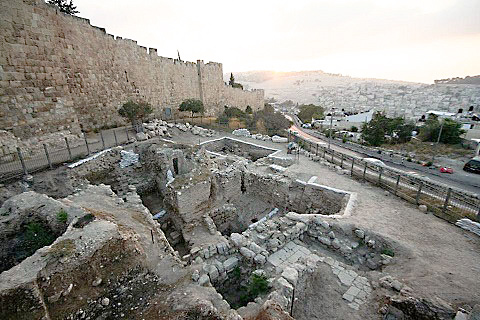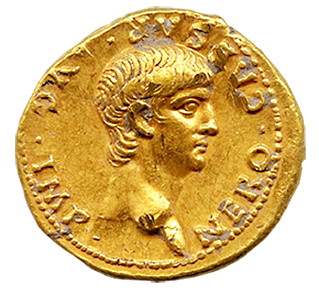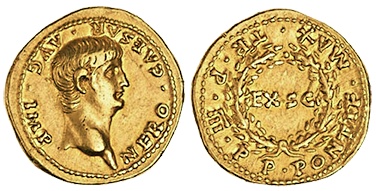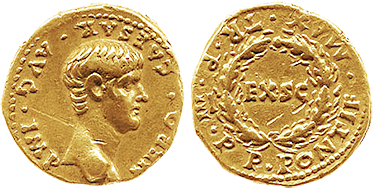
Bible, History, Archaeology
Bible,
History,
Archaeology
A aureus effigy of Nero
discovered in Jerusalem
The discovery
According to the researchers, the’aureus - gold coin in ancient Rome - was unearthed in the rubble of first-century Jewish houses, possibly belonging to members of the priestly caste (Cohanim).
This discovery is particularly important because it was made as part of a scientific project, and thus provides reliable evidence of where it was extracted.
Image opposite: Archaeological excavations on Mount Zion in Jerusalem. Shimon Gibson, University of North Carolina at Charlotte.

According to numismatists Jane Sancinito and David Jacobson, the gold coin was minted in Rome in 56/57 (there were only two sources of issue in the Empire at the time, one in Rome and the other in Lyon). It therefore travelled a long way to reach Jerusalem. Roman coins, and in particular the aurei circulated mainly as military pay.
James Tabor notes that the piece probably dates from «...the same year as the apostle Paul's last visit to Jerusalem, which led to his arrest and imprisonment in Caesarea for his appearance before the imperial court in Rome.» Acts 21:27-40. (See also the Apostle Paul).

The room, called aureus - gold coin in ancient Rome -, bears on the obverse a portrait of Nero and an inscription :
NERO CAESAR AVG IMP Nero Caesar Augustus Imperator.
© University of North Carolina.
The inscription on the obverse of the coin

Nero became emperor at the age of 17.
Image opposite: this gold coin from the collection of the American Numismatic Society is from the same series as the coin found in Jerusalem. American Numismatic Society.
At the time this coin was minted, he must have been between 19 and 20 years old. The style of the portrait reflects his age, and depicts him in a more independent style than that of the artistic principles in force under Caesar Augustus.
The inscription on the reverse of the coin
The reverse features a wreath of oak leaves, an important symbol in Roman culture. We know it as the civica corona, or civic crown. The crown was originally a military honor given to a Roman who had saved the life of a citizen in battle by killing an enemy of the state. Throughout the empire, this symbol was progressively reserved for the emperor.
Image opposite: this aureus exhibited at the British Museum in London, is part of the same series as the gold coin discovered as part of the Zion Mont project in Jerusalem. British Museum.

